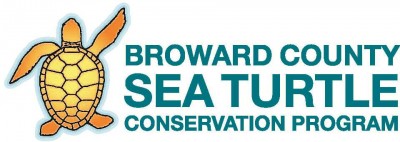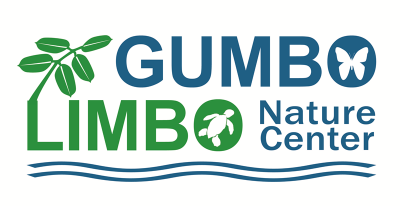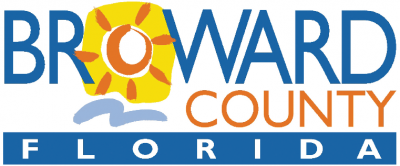NSU Newsroom
SharkBytes
Horizons
This version of NSU News has been archived as of February 28, 2019. To search through archived articles, visit nova.edu/search. To access the new version of NSU News, visit news.nova.edu.
This version of SharkBytes has been archived as of February 28, 2019. To search through archived articles, visit nova.edu/search. To access the new version of SharkBytes, visit sharkbytes.nova.edu.
Rehabilitated Juvenile Green Sea Turtle to be Released Back Into the Atlantic Ocean
Public Invited to Help Send Rescued Turtle Back to Its Home Thurs., Nov. 5th
FOR IMMEDIATE RELEASE
FORT LAUDERDALE-DAVIE, Fla. – Like the millions of people who call Florida home, so, too, do five species of sea turtles. And like their human counterparts, turtles are frequently seen just offshore from Broward County or near one of the many fishing piers in the county. Unfortunately, sometimes these encounters aren’t always so friendly.
So is the plight of “Cedar,” a small green sea turtle that was inadvertently hooked by a fisherman near the Dania Beach Pier last month. Now that Cedar has been nursed back to health, it’s time to send the little turtle back home – the Atlantic Ocean.
 The public, including members of the media, are invited to join members the Broward County Sea Turtle Conservation Program (BCSTCP), Nova Southeastern University (NSU,) and the Gumbo Limbo Nature Center and help give Cedar a tremendous send-off! The release event is scheduled for 5 p.m. Thursday, November 5 near the Carpenter House, 4414 Surf Road, Hollywood. There is additional parking off of Greene Street.
The public, including members of the media, are invited to join members the Broward County Sea Turtle Conservation Program (BCSTCP), Nova Southeastern University (NSU,) and the Gumbo Limbo Nature Center and help give Cedar a tremendous send-off! The release event is scheduled for 5 p.m. Thursday, November 5 near the Carpenter House, 4414 Surf Road, Hollywood. There is additional parking off of Greene Street.
On October 8th, 2015 the Broward County Sea Turtle Conservation Program staff responded to a call to the 24-Hour Broward County Sea Turtle Emergency Response line (954-328-0580) about a small turtle that had been accidently hooked by a fisherman. Upon arrival to the pier, pier staff had Cedar in a safely contained area. Cedar was quite active and was assessed on site by the BCSTCP program staff and then transported to the Gumbo Limbo Nature Center for treatment. Cedar was very lively when first encountered, giving the response and rehabilitation staff hope that the turtle would make a good recovery.
Upon arrival at th e Gumbo Limbo Nature Center, their rehabilitation staff was ready to receive Cedar for treatment. After a preliminary examination, one fishing hook was immediately found; two more were found later after X-rays were taken. Two hooks around the neck area were removed, but the third was too deeply imbedded in Cedar’s shell to be removed without further stressing the turtle. This third hook is extremely corroded and does not seem to be a long-term issue, leaving Gumbo’s staff with the confidence that Cedar’s best option is to return home.
e Gumbo Limbo Nature Center, their rehabilitation staff was ready to receive Cedar for treatment. After a preliminary examination, one fishing hook was immediately found; two more were found later after X-rays were taken. Two hooks around the neck area were removed, but the third was too deeply imbedded in Cedar’s shell to be removed without further stressing the turtle. This third hook is extremely corroded and does not seem to be a long-term issue, leaving Gumbo’s staff with the confidence that Cedar’s best option is to return home.
 Unfortunately fishing hooks are a common cause of strandings near piers, since much of the bait used looks mighty tasty to a sea turtle. Thankfully, Dania Beach Pier staff were trained under the Responsible Pier Initiative in 2013, which better equips and familiarizes pier staff with how to respond once a sea turtle is hooked. This training allows for a faster response time to a specialized facility like Gumbo Limbo Nature Center, and therefore a better chance at survival.
Unfortunately fishing hooks are a common cause of strandings near piers, since much of the bait used looks mighty tasty to a sea turtle. Thankfully, Dania Beach Pier staff were trained under the Responsible Pier Initiative in 2013, which better equips and familiarizes pier staff with how to respond once a sea turtle is hooked. This training allows for a faster response time to a specialized facility like Gumbo Limbo Nature Center, and therefore a better chance at survival.
After a month of treatment and rehabilitation at Gumbo Limbo Nature Center, Cedar is ready to head back home. The Broward County Sea Turtle Conservation Program, NSU’s Halmos College of Natural Sciences & Oceanography and the Gumbo Limbo Nature Center invites members of the South Florida media and the community at large to join us for the release of Cedar. Please come help us send Cedar back to the wild in style at 5 p.m. Thursday, November 5th!
Here are some sea turtle stranding/rehabilitation stats from the past two years:
| 2014
40 Strandings: (26 Dead, 14 Live)
Live: 14 Turtles 8 Green Sea Turtles 4 Loggerhead Sea Turtles 2 Hawksbill Sea Turtles
Dead turtles result of boat strikes, hooked, predator attacks and unknown causes.
Turtles went to Miami Seaquarium, The Sea Turtle Hospital in Marathon, FL and the Gumbo Limbo Nature Center in Boca Raton, FL for treatment; others attended to via Pier Response |
2015
71 Strandings: (35 Dead, 32 Live, 4 died during transport)
Live: 32 Turtles 28 Green Sea Turtle 3 Loggerhead Sea Turtle 1 Hawksbill Sea Turtle
Dead turtles result of boat strikes, hooked, predator attacks and unknown causes.
Turtles went to Gumbo Limbo Nature Center in Boca Raton, FL and Miami Seaquarium for treatment; others attended to via Pier Response |
###
About Nova Southeastern University (NSU): Located in beautiful Fort Lauderdale, Florida, Nova Southeastern University (NSU) is a dynamic research institution dedicated to providing high-quality educational programs at the undergraduate, graduate, and first-professional degree levels. A private, not-for-profit institution with more than 24,000 students, NSU has campuses in Fort Lauderdale, Fort Myers, Jacksonville, Miami, Miramar, Orlando, Palm Beach, and Tampa, Florida, as well as San Juan, Puerto Rico, while maintaining a presence online globally. For more than 50 years, NSU has been awarding degrees in a wide range of fields, while fostering groundbreaking research and an impactful commitment to community. Classified as a research university with “high research activity” by the Carnegie Foundation for the Advancement of Teaching, NSU is 1 of only 37 universities nationwide to also be awarded Carnegie’s Community Engagement Classification, and is also the largest private, not-for-profit institution in the United States that meets the U.S. Department of Education’s criteria as a Hispanic-serving Institution. Please visit www.nova.edu for more information.
About NSU’s Halmos College of Natural Sciences and Oceanography: The college provides high-quality undergraduate and graduate (master’s and doctoral degrees and certificates) education programs in a broad range of disciplines, including marine sciences, mathematics, biophysics, and chemistry. Researchers carry out innovative basic and applied marine research programs in coral reef biology, ecology, and geology; fish biology, ecology, and conservation; shark and billfish ecology; fisheries science; deep-sea organismal biology and ecology; invertebrate and vertebrate genomics, genetics, molecular ecology, and evolution; microbiology; biodiversity; observation and modeling of large-scale ocean circulation, coastal dynamics, and ocean atmosphere coupling; benthic habitat mapping; biodiversity; histology; and calcification. The college’s newest building is the state-of-the-art Guy Harvey Oceanographic Center, an 86,000-square-foot structure filled with laboratories; offices; seminar rooms; an auditorium; and indoor and outdoor running sea water facilities. Please visit cnso.nova.edufor more information.
November 4, 2015
Joe Donzelli | Office of Public Affairs
954-262-2159 (office) | 954-661-4571 (cell)
jdonzelli@nova.edu| www.nova.edu